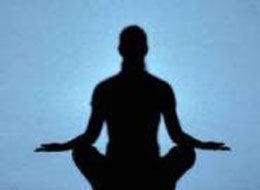
I come from a family of squatters. In fact, my family comes from a land of squatters. I don't mean anything figuratively by it, as in, I like to go into empty houses and occupy it illegally. I mean literally that I like to squat. I like to squat with my knees apart, with the backs of my ankles against my sitting bones and my elbows gently pressing on the inside of my knees.
I am of Korean heritage, and believe you me, it is not uncommon to see people of all ages and both sexes squat, especially on the countryside where chairs may not be readily found. My husband, who is a white American, does not like this sight. It unsettles him to see people in this position because he thinks that it exposes some sort of vulnerability. It is as if humanity is now so beyond this way of sitting that to squat would mean some sort of recidivism.
When I incorporate squatting, or malasana, into my yoga classes, I see all kinds of responses from students. There are those who proceed to squat with ease with all points of their feet firmly grounded on the floor, gently rocking side to side until they settle in a comfortable position. Then there are those who have their heels way up off the floor that they are barely balancing on the balls of their feet. They try to rest their elbows or hands on the knees, but struggle to keep the equilibrium. They don't look particularly graceful, but they try. And there are those that just don't try. It hurts their back, it hurts their feet, it hurts everything.
In many exercise routines, repetitious squatting is touted as one of the best and most effective ways to tone all muscles in your legs, in the core, and the back and the butt. It is impossible to squat without engaging all these muscles especially when weights are involved. Can you imagine a weightlifter who can't squat? Weightlifters always start from a squat because, when performed correctly, it is one of the most optimal ways to engage the whole body in lifting that weight.
In many Chi Kung books some form of squat with knees pulled in close to the body is invariably recommended for stomach troubles. The position of legs in puts gentle pressure on the abdomen and helps alleviate any pains that may be caused by poor digestion. Squatting is also touted as the nature's best way to eliminate waste. There are many websites that will describe exactly and vividly how that is, although we can imagine that how pressure on your lower abdomen would promote elimination, I will not get into detail. (You can follow the link here to find out if you are so inclined.)
But it is not just my American husband who finds squatting so primitive that it is almost repulsive. The history of this intense Western dislike of squatting goes even as far back as the 19th century when the British Empire ruled India as Galen Cranz describes in his book, Rethinking the Chair: Rethinking the Culture, Body, and Design. Squatting was seen as a sign of primitiveness while sitting on chairs was seen as a sign of civilization. Squatting became one of the compasses with which to measure the progress of civilization while the chair, and all variants thereof including the couch, became the measure by which to gauge a society's civilized status.
So we finally come to the culture of the supremely civilized being, the epitome of civilization by the measure of how comfortably s/he may sit on a chair rather than on his/her own feet, the couch potato. The couch potato has completely abandoned squatting (God forbid!) and thoroughly embraced, even perfected, the art of sitting on the most comfortable chair of all chairs that we can possibly think of. As the term "couch potato" implies we now completely abandon the involvement of a single muscle in the body when we sit. Wow, that is civilization at its peak. We should celebrate the couch potato. But do we? Hardly.
Besides the benefits of doing squats in terms of modern-day fitness, the simple act of squatting can be beneficial to your body. Yogis do it now as yogis have done it for thousands of years. Denise Kaufman explains it well in the following video:
In yoga, malasana, or the garland pose, is used to invite openness in the hips and in the groin area. The benefits of open hips is obvious: openness in hips prevents injury. When runners come to my class and complain that their hips are really tight, I invite them to follow a hip-opening routine, which always include squatting. I see this tightness in runners all the time. Their muscles are so tight that they almost pop out of the skin in a neat line from the top of their upper leg down to their knee. This muscular tension keeps their hips from opening sideways, and the leads to tightness in the area.
Squatting is one of the easiest ways of opening the hips. In addition, it strengthens the back muscles and helps widen the range of motion in the feet. Squatting has nothing to do with the impoverished Third World, primitiveness, or recidivism. Rather, it has everything to do with what we have given up in the name of civilization, of letting external objects do the work of what our bodies are designed to do naturally.
So let's get off the couch and squat. After all, what do we have to gain? Stronger muscles in the back? Sure! Flexibility in the hips? Absolutely! Stronger core? Of course! Wider range of motion for the feet? You bet!
I would like to think that we gain by squatting not only an openness, which we as "civilized" beings unfortunately interpret as vulnerability, of our bodies, but also an openness of mind.